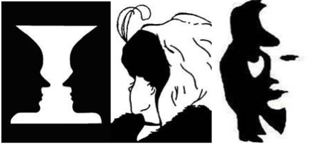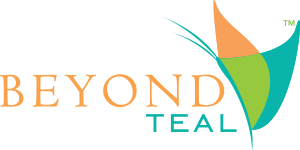A word from Bruce Peters:
As a former attorney, executive coach, host of WCEO-HQ Radio, and the founder of Beyond Teal it has always been my intention to guide individuals and organizations to reach their highest potential. Beyond Teal emphasizes how the greatest difference is made with one individual at a time … bringing them into the Beyond Teal conversation and watching their potential bloom and amplify among their peers. It is with great joy that I get to introduce Cheryl Adas, Beyond Teal’s Lead Consultant, as a valuable addition to this conversation. She brings extraordinary talent, dedication, and natural insight to the Teal process and makes Teal’s expansion within organizations possible … and with it … healthy, robust growth for Rochester’s business community.
Let the conversation flow!
-Bruce Peters
A recent question posed on LinkedIn caught some attention. It was innocent enough. A fellow runs a small tech upstart and wanted to know how to handle his developers whom he perceives as playing ping pong all day.
Advice flew fast and furious. Some applauded the ping pong table as a sign of “good culture.” Others felt strong disciplinary action was necessary. A handful of people offered a careful plan of sequential top-down conversations the CEO should have with each developer. Still others jumped on the opportunity to rant against the alleged lack of a millennial work ethic.
Only a precious few bothered to ask for more information before chiming in. These questions all sought clarification on engagement, behavior, and performance. These questions were the only attempts to gain some perspective in a scenario that communicated only the most basic level of information.
The Perception Question
Let’s run a little experiment on perspective:
- In the image on the left, focus on the white.
- For the middle and far right: think of youthful beauty.

Now tell me, what do you see?
Did your previous experiences or the above language correlating with each picture influence your perception in any way?
Of course it did. And of course, you know that there are two ways to perceive the same image.
Save that thought for later.
Now in an organization (like the LinkedIn example), stakes are much higher than an exercise interpreting negative space. But the underlying concept is the same. Perception is, first and foremost, the starting place with all communications.
In the book The Three Laws of Performance: Rewriting the Future of Your Organization and Your Life, authors Steve Zaffron and Dave Logan explain how communication-based solutions can energize and sustain an organization.
Here are the three laws:
- How People Perform Correlates to How Situations Occur to Them.
- How a Situation Occurs Arises in Language.
- Future Based Language Transforms How Situations Occur to People.
Now we are playing with three extremely critical pieces here – perception, communication, and performance. The Three Laws of Performance brings these together in a fascinating way.
There is the illusion of reality at work here. We fail to recognize that we don’t always see things as they are. (Let’s be clear…I’m not talking about hard facts like the undisputed numbers of people in a crowd or overwhelming trends in science research). What I am supporting is that we all see things from the perspective of how they occur to us. This is so fundamentally important when we consider how we communicate with people, especially when we are looking to transform and enhance our organizations.
Let’s dive into corporate reality with the just the first law.
How People Perform Correlates to How Situations Occur to Them
It starts with another image. Picture an organization that wants to increase profits.
Perspective A: In the quest for a better bottom line, decision-makers make financial cutbacks and add new tracking mechanisms to increase efficiency and profits. This will improve the company’s viability, profitability, and job security. A good thing, right?
Perspective B: Employees, however, don’t see it this way. Tracking mechanisms are a sign of not being trusted and add burden to already busy schedules. Top-down, cost-cutting without staff input is interpreted as an unsympathetic act. Morale suffers. Performance declines.
To boost morale, decision-makers post inspirational quotes and plan team-building retreats. Staff members see disingenuous efforts that make assumptions about what they may want. The efforts have a short-term value and do not engage staff as intended. Profits stay flat as gains in the cutbacks and tracking are offset by disengaged employees who are not inspired to bring their full set of talents to the organization (a.k.a. wholeness). Management is frustrated that all the effort and expense invested into these changes essentially did nothing except upset staff. Clearly, they conclude, something is wrong with today’s younger generation of worker.
Communication-Based Solution
How might the outcome have been different if staff members were included in the conversation from the beginning?
If they aren’t included in these initial conversation, why not? Lack of trust? Why don’t you trust the staff members you have carefully hired, trained, and coached?
Too often, senior staff have conversations among themselves, behind closed doors, that may last for months about an initiative or change. When the action is sprung, the remaining staff members feel left out. And for good reason. Because they were.
How can you align the purpose and actions of your organization unless you share – through communication and discussion – what these efforts might entail? Wouldn’t you want to know how your staff might react before implementing something?
What might happen if you, as the CEO asked, what do you think about this? And then respected the answers?
It’s easy to know where you stand on a topic. Communication can only happen when you meet others where they are, which, almost always, is somewhere else. And that is where the foundation to performance is built.
These are difficult and probing questions. But aren’t you here to find real solutions and not more band-aids?
We thought so.
This brings us to Teal….
What’s particularly striking about The Three Laws of Performance is how these laws dovetail so perfectly into a Teal organization. These are organizations that have sustained health and vigor. They are high-performers. The cool cultures. The quiet superstars of the business world.
Teal is a strategy with three breakthroughs that challenge current management practices; self- leadership, wholeness, and a shared purpose. Communication-based solutions are an effective tactic deep inside that strategy. It’s a tactic that seeks to fix the source of a problem. (For an analogy, think of type 2 diabetes. Teal is the lifestyle change that cures the pathology and one tactic includes eating healthier. Alternatively, medication is an expensive band aid that only masks the symptoms).
If spending valuable resources on expensive band aids for your organization is working well, by all means, don’t change a thing! If, however, you are looking for a systemic cure; perception is a good place to start.
Speaking of which, here are the answers to the images above: 1) chalice, two opposing, facial profiles. 2) young woman looking away, old woman looking down. 3) young woman’s face, saxophone player.
# # #
Discover how Teal organizations align their culture, strategy and profits for a vibrant, thriving and sustainable organization. Join Bruce Peters and Cheryl Adas for a workshop on Profit, Culture & Strategy including a panel discussion featuring Optimax, a Rochester manufacturing organization utilizing the Teal process to significantly improve all their key performance indicators. Workshop is on June 15th at the Country Club of Rochester. Learn more here.
Is your organization implementing any Teal strategies and practices? Take the Teal Organizational Readiness Assessment and find out!
Cheryl Adas is powered by bringing out the best in others. As a specialist in sales evolution leadership, she has helmed the progressive advancement of numerous large-scale sales processes. Accomplishments include launching Courtyard by Marriott Hotels and rolling out The Challenger Sale to more than 1000 sales leaders, professionals and support teams at Xerox Corporation. Today she works as the Lead Consultant at Beyond Teal.


